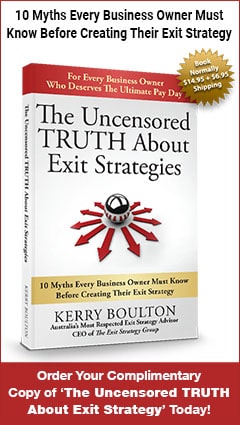What’s So Special About The Million-Dollar Mark?

Since businesses are often valued on a multiple of earnings, getting to a million in profit means you’re not only getting a higher multiple but also applying your multiple to a higher number.
For example, according to research at ValueBuilderSystem.com, a company with $200,000 in EBITDA might be lucky to fetch three times EBITDA, or $600,000. A company with a million dollars in EBITDA would likely command at least five times that figure, or $5 million. So the company with $1 million in EBITDA is five times bigger than the $200,000 company, but almost 10 times more valuable.
There are a number of reasons that offer multiples go up with company size, including:
- Frictional Costs
It costs about the same in legal and banking fees to buy a company for $600,000 as it does to buy a company for $5 million. In large deals, these “frictional costs” become a rounding error, but they amount to a punitive tax on smaller deals.
- The 5-20 Rule
I first learned about the 5-20 rule from a friend who runs an M&A firm. He discovered that, in many of the deals he does, the acquiring company is between 5 and 20 times the size of the target company. I’ve since noticed the 5-20 rule in many situations and I believe that more often than not, your natural acquirer will indeed be between 5 and 20 times the size of your business.
If an acquiring business is less than 5 times your size, it is a bet-the-company decision for the acquirer. If the acquisition fails, it will likely kill the acquiring company.
Likewise, if the acquirer is more than 20 times the size of your business, the acquirer will not enjoy a meaningful lift to its revenue by buying you. Most big, mature companies aspire for 10 to 20 percent top-line revenue growth at a minimum. If they can get 5 percent of organic growth, they will try to acquire another 5 percent through acquisition, which means they need to look for a company with enough girth to move the needle.
- Private Equity
Private Equity Groups (PEGs) make up a large chunk of the acquirers in the mid-market. The value of your company will move up considerably if you’re able to get a few PEGs interested in buying your business. But most PEGs are looking for companies with at least $1 million in EBITDA. The million-dollar cut-off is somewhat arbitrary, but very common. As with homebuyers who narrow their house search to houses that fit within a price range, or universities that look for a minimum ENTER score, if you don’t fit the minimum criteria, you may not be considered.
If you’re close to a million dollars in EBITDA and getting antsy to sell, you may want to hold off until your profits eclipse the million-dollar threshold, because the universe of buyers—and the multiple those buyers are willing to offer—jumps nicely once you reach seven figures.
Whether you want to sell now or in a decade, or are thinking of passing the business to the next generation, the Value Builder Score assessment allows you to see your business as a buyer would see it, and to identify how you perform on each of the eight key drivers of company value. The questionnaire takes about 13 minutes to complete, and after you’re finished you’ll get a customised 27-page report outlining how you performed and where you could improve the value and sellability of your company. Get your score now



Recent Comments